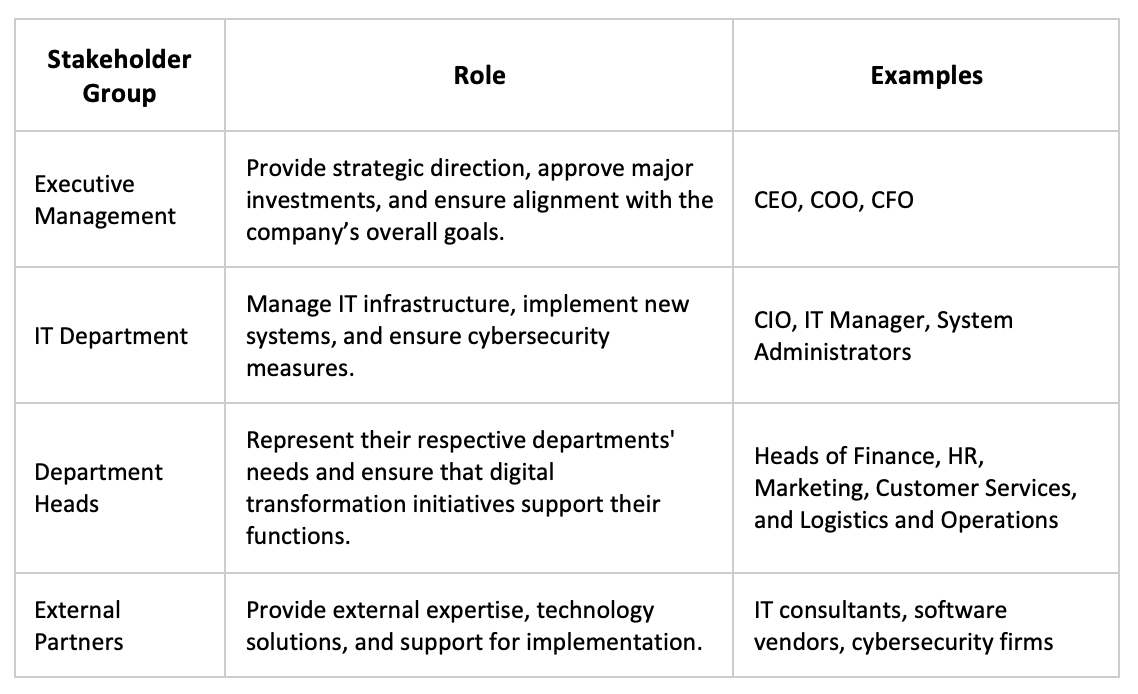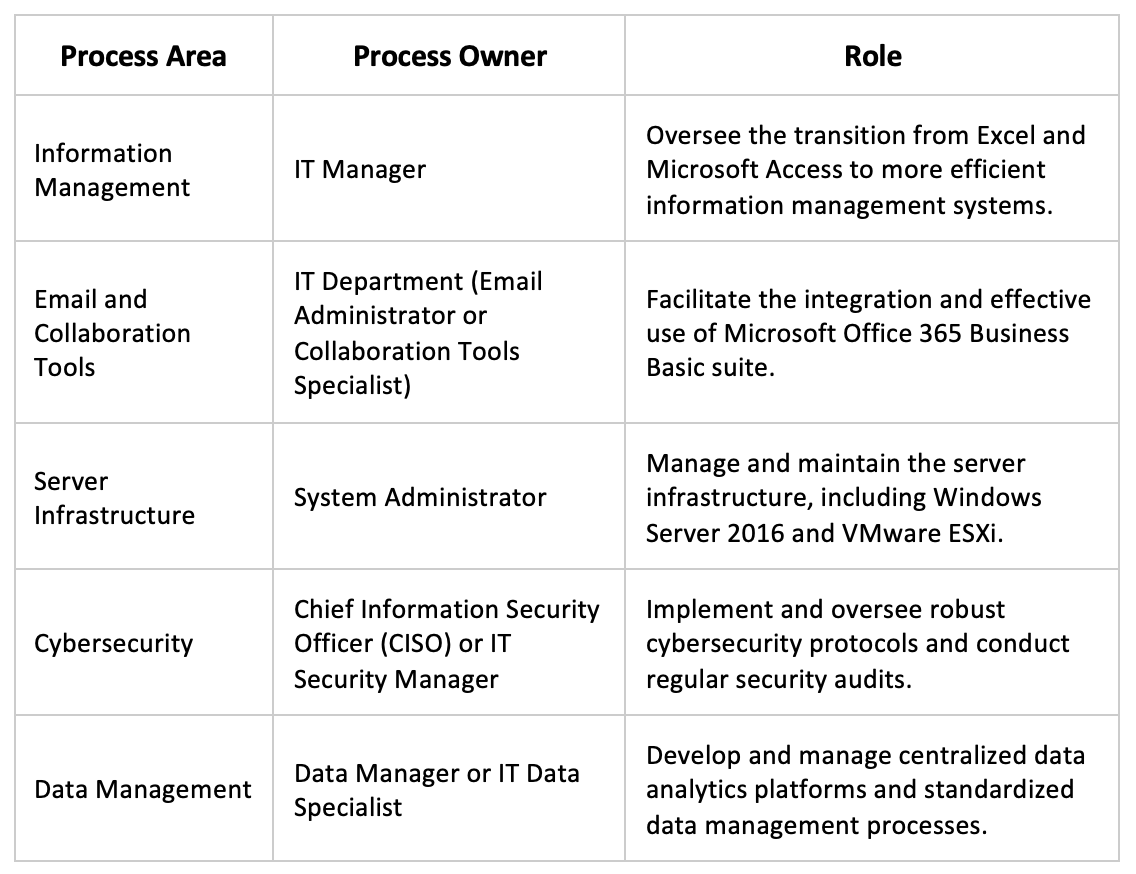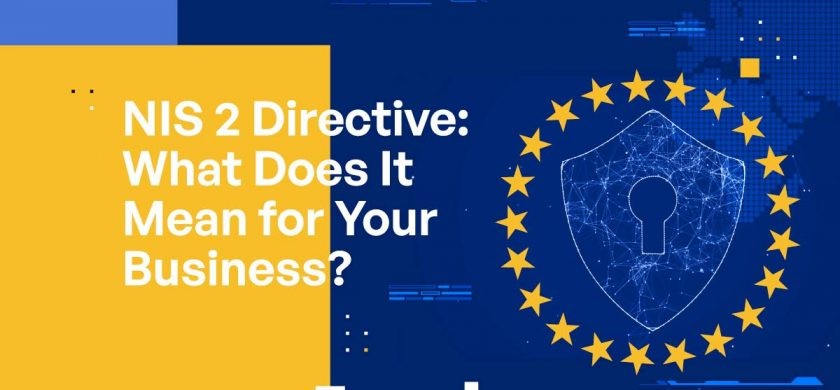
The Crucial Role of Stakeholder Engagement in Digital Transformation
Digital transformation (DX) is a strategic necessity for companies seeking to stay competitive in today’s fast-paced technological landscape. However, the success of these initiatives depends heavily on stakeholder engagement. This text will give you an insight into why stakeholder engagement is vital, identify key stakeholders, and outline effective engagement strategies.
Importance of Stakeholder Engagement
Aligning Goals and Objectives
Stakeholder engagement ensures that all relevant parties are aligned with the company’s goals and actively contribute to the digital transformation process.
Engaged stakeholders provide valuable insights and feedback, leading to better-informed decisions and a higher likelihood of project success. According to a McKinsey report, companies that successfully engage their stakeholders in digital transformation projects are likelier to achieve their objectives and see improved performance.
Risk Management and Adaptability
Engaging stakeholders helps identify and address potential risks early in the project. By tapping into stakeholders’ collective knowledge and experience, project managers can uncover hidden risks and develop comprehensive risk mitigation strategies. Additionally, ongoing engagement makes organizations more responsive to changing circumstances, ensuring the project remains relevant and effective.
Resource Optimization
Effective stakeholder engagement leads to better resource allocation. By involving stakeholders in decision-making processes, project managers can make informed choices regarding the use of resources, ensuring that they are allocated in a manner that aligns with stakeholder needs and expectations. This approach maximizes the project’s overall efficiency and effectiveness.
Identifying Key Stakeholders
Executive Leadership and Senior Management
Executive leaders are crucial for securing funding, formulating a vision, and driving the success of digital transformation initiatives. Their support is essential for making strategic decisions and ensuring alignment across the organization.
IT Staff and Department Heads
These stakeholders are responsible for implementing and managing the technical aspects of the transformation. Their expertise and buy-in are critical for the project’s technical success and ensuring that new technologies are integrated smoothly into existing systems.
Employees
Employee engagement is vital as they are the end-users of the new systems and processes. Training and addressing their concerns helps reduce resistance to change and ensures a smoother transition from the current state to the TO-BE state.
External Partners
External partners, including vendors and consultants, play a key role in providing the tools, technologies, and expertise required for digital transformation. Their involvement helps leverage external knowledge and resources to support the project.
Project Success Rates
Statistics show that stakeholder engagement significantly impacts project success rates. According to a PMI (Project Management Institute) study, projects with high stakeholder engagement are 21% more likely to be completed successfully.

Project Success Rates with vs. without Stakeholder Engagement
Here’s a chart illustrating the project success rates with and without stakeholder engagement. It shows that projects with stakeholder engagement have a significantly higher success rate (82%) than those without (61%).
Engagement Strategies
Regular Communication
Establishing clear and consistent communication channels is fundamental. Regular updates, meetings, and newsletters help keep stakeholders informed about the project’s progress and any possible changes. This transparency builds trust and keeps everyone aligned.
Feedback Sessions
Regular feedback sessions allow stakeholders to voice their opinions, concerns, and suggestions.
This two-way communication ensures stakeholders feel valued and heard, creating a sense of ownership and commitment to the project.
Collaborative Planning Meetings
Involving stakeholders in planning meetings encourages collaboration and ensures their insights are considered in decision-making. This collaborative approach helps align the project’s goals with the needs and expectations of different stakeholders.
Tailored Communication Strategies
Different stakeholders have different needs and preferences. Tailoring communication strategies to suit each stakeholder group ensures the information is relevant and delivered through appropriate channels. This approach enhances engagement and ensures that all stakeholders are adequately informed.
Stakeholders and Process Owners
Example CASE (Imaginary company that we mentioned in the previous articles)
- Article 1: https://www.linkedin.com/pulse/strategic-plan-companys-digital-transformation-ris-pmp-pba–umwof/?trackingId=ZazZ9o57QV6bNtTmLRVapQ%3D%3D
- Article 2: https://www.linkedin.com/pulse/creating-comprehensive-strategic-analysis-document-ris-pmp-pba–macsf/
Imaginary Company Stakeholders
This table overviews the primary stakeholders involved in digital transformation initiatives. It identifies each stakeholder group’s key roles and responsibilities, highlighting their importance in successfully executing these projects.
By understanding the specific contributions and expectations of executive leadership, IT staff, department heads, employees, and external partners, organizations can better align their efforts to achieve a cohesive and effective transformation process.

Table 1: Stakeholders
Imaginary Company Process Owners
The table outlines various strategies for effectively engaging stakeholders throughout the digital transformation journey. It includes detailed approaches such as regular communication, feedback sessions, and collaborative planning meetings.

Table 2: Process Owners
Takeaways
Stakeholder engagement is a critical component of successful digital transformation. Organizations can ensure that their digital transformation initiatives are successful and sustainable by aligning goals, managing risks, optimizing resources, and fostering collaboration.
Engaging key stakeholders through regular communication, feedback sessions, and collaborative planning is essential for building a strong foundation for digital transformation.
By prioritizing stakeholder engagement, organizations can more effectively navigate the complexities of digital transformation and achieve their strategic objectives.
If you need help with your DX, don’t hesitate to email me at krunoslav.ris@gmail.com or directly in DM.






